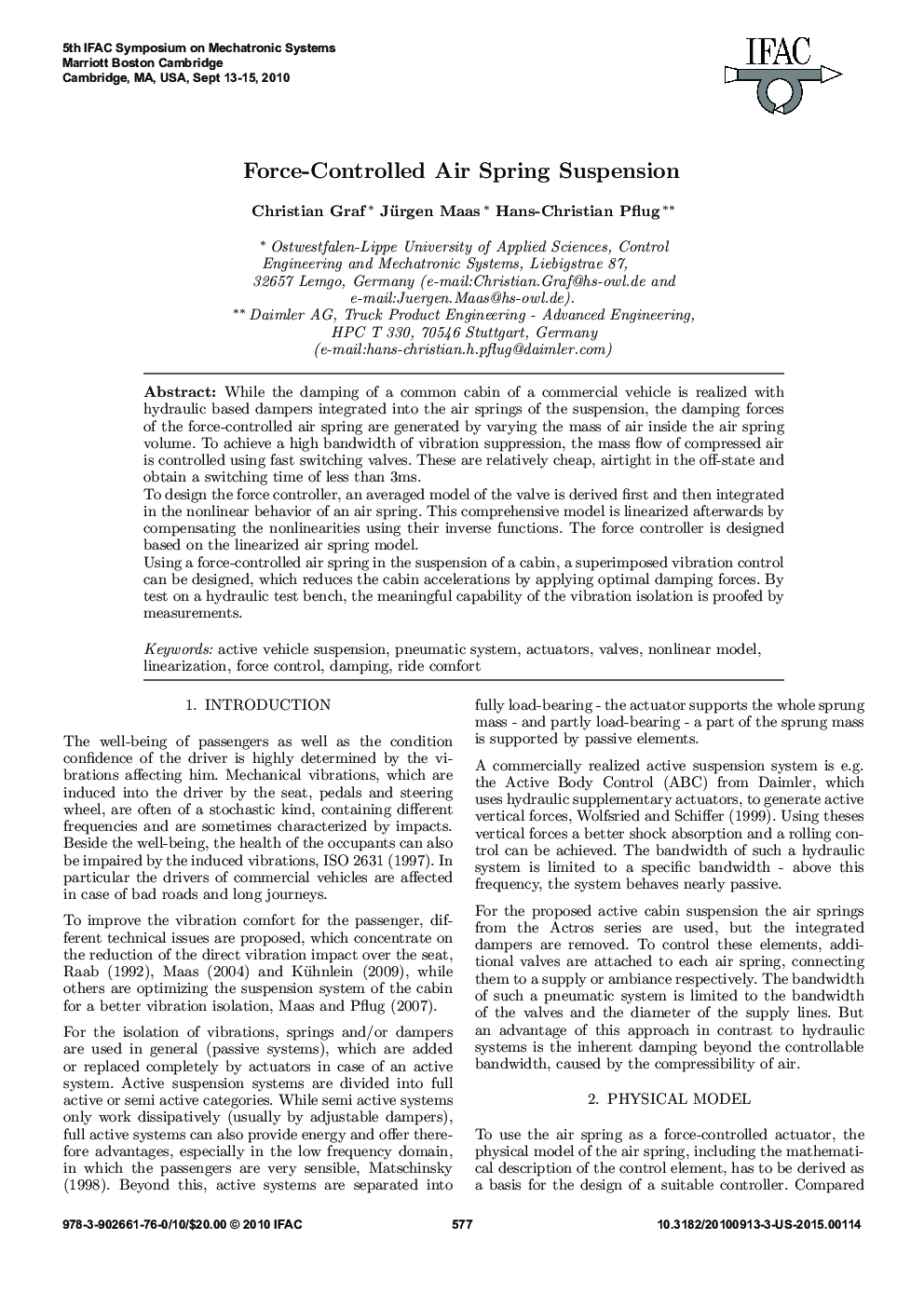| Article ID | Journal | Published Year | Pages | File Type |
|---|---|---|---|---|
| 715934 | IFAC Proceedings Volumes | 2010 | 6 Pages |
While the damping of a common cabin of a commercial vehicle is realized with hydraulic based dampers integrated into the air springs of the suspension, the damping forces of the force-controlled air spring are generated by varying the mass of air inside the air spring volume. To achieve a high bandwidth of vibration suppression, the mass flow of compressed air is controlled using fast switching valves. These are relatively cheap, airtight in the off-state and obtain a switching time of less than 3ms.To design the force controller, an averaged model of the valve is derived first and then integrated in the nonlinear behavior of an air spring. This comprehensive model is linearized afterwards by compensating the nonlinearities using their inverse functions. The force controller is designed based on the linearized air spring model.Using a force-controlled air spring in the suspension of a cabin, a superimposed vibration control can be designed, which reduces the cabin accelerations by applying optimal damping forces. By test on a hydraulic test bench, the meaningful capability of the vibration isolation is proofed by measurements.
